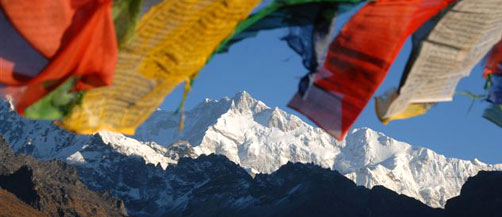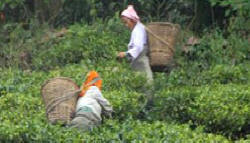|
NEPALESE AGENCY FOR TREKKINGS, EXPEDITIONS
AND CULTURAL CIRCUITS
TRINETRA 
|
||||||||||||
|
|
|
|
|
|
||||||||
|
Population
The oldest populations of Sikkim are of Lepchas, speaking about the languages tibéto-Burmeses and aspect more or less mongoloïdes. They are generally pastors or farmers, and practise Buddhism more or less tinted of animism. They are very minority in the population. Indeed, Sikkim was gradually populated Tibetans, often pastors and caravaneers. Those represent more of the third of the population. However, the hindouists come from Nepal and India form the majority population. It is among them that most of the farmers is recruited. 75% of Sikkimais are of Nepalese origin. Lepchas represent nothing any more but 15 % population. The other inhabitants are of Bhutias, origin Tibetan, and the Indians come from the plain. Economically and sexually free, Bhutias, ethnos group come from Kam in Tibet, the characteristic to be a company matriarcale. Polyandry is at euxtrès widespread. They are nomads, which like the festival, the music, the shooting with the arc and to plant their tents at the edge of the rivers Himalayan sanctuary drawn up between the touffeurs of Bengal and lonelinesses of Tibet, Sikkim, formerly a kingdom, is today the State twenty-second of the Republic of India. Still little known of the travellers, it always attracted the mystics. A traveller heard the call of altitude there, as the innumerable Buddhist pilgrims who did not cease surveying this ground of awakening. They plant there at the tops of the flags of prayer so that the wind carries with further their incantations. It is one of more small States of India, since he extends only on 7.096 km2 and counted only 406.457 inhabitants at the time of the census of 1991, of which forty thousands resided in the capital, Gangtok. Geography Sikkim, (way of passage between India and Tibet) whose capital is Gangtok, is an Indian State being next to Tibet, Nepal and Bhutan. The landscapes are extraordinary and of many sites superb sights on all the Himalayan chain offer, in particular on Kanchenjunga, third plus high summit of the world. Mountainous walls (Kanchenjunga and Chola) separate it from Nepal and of Bhutan
The highest areas of Sikkim are with more than 8.000 m of altitude, but
lowest, very restricted it is true, are around 200 meters. The organization
of space is thus primarily function of the staging.
To the south, some valleys belong to the tropical zone, with a forest of leafy trees of hot climate and rice cultures. The most alive part of the country extends between 1.200 and approximately 2.200 m, with a climate of the already moderate type, a forest of leafy trees similar to those of Western Europe. The dominant culture is that of corn, associated with that of the barley, the oats, the cardamomes. The breeding rests on the use of the yaks, but also of an hybrid yak-cow, the zomo. Funds of valley, very narrow at this altitude, where the glacial print is weak, are rather not very occupied. The men are installed on slopes, carefully arranged in terraces, on which the dwellings disperse. It is not rare to see the same human group exploiting fields staged on several hundred meters of made uneven, even on more than thousand. From 2.200 to approximately 3.600 m reign a cold moderate climate, with still of the leafy trees, but less clearings. The corn yields here the place to corn, with potatoes. The forest of conifers, enters 3.000 and 3.600 m, are used as pastoral zone, with important movements of herds, because snow is rather abundant there each winter. This breeding uses also the zone of the mountain pastures, from 3.600 to approximately 5.000 m, above which start persistent snows Relief Ground of tops dominated by the 8 598 meters of the solid mass of Kanchenjunga (the mountain-goddess), Sikkim is however called the “valley of rice”. Here, the extremes meet for brightest of the marriages of climatic disproportion. In a few hours, one passes from the jungle to the terraces to fodder, of the farms where one stores the with the glaciers and the eternal snow of the Pandim mount
Climate
SIKKIM
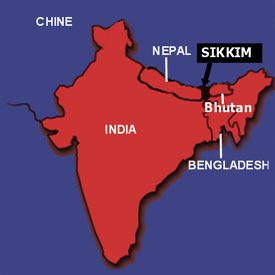
Religion 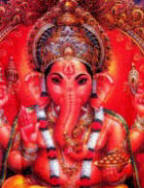 Ganesh, wire of Shiva, are the Master of all the malfaisants spirits. It east is a god débonnaire, very popular and very venerated.
Economy
The economy of Sikkim still is very folded up on itself, although the mineral richnesses are important (iron ore, coppers, antimony, bismuth, lead, zinc… It is primarily based on agriculture. The dominant culture is that of corn, associated with that of the barley, the oats, the cardamomes. Sikkim is the principal producer of cardamome in India. The breeding rests on the use of the yaks, but also of an hybrid yak-cow, the zomo. The funds of valley, very narrow at this altitude, where the glacial print is weak, are rather not very occupied. The men are installed on slopes, carefully arranged in terraces, on which the dwellings disperse The true interest of Sikkim is elsewhere, in its position on a road transhimalayenne which was very attended (as much as all the others all along the chain). .jpg) GANGTOK 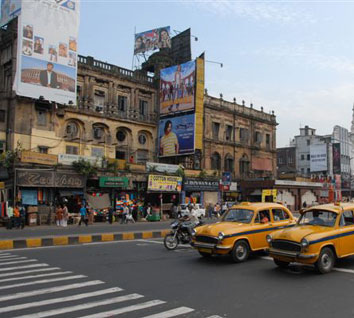 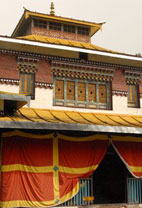 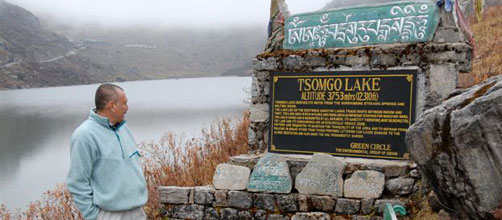 Tsomgo lake 3753m
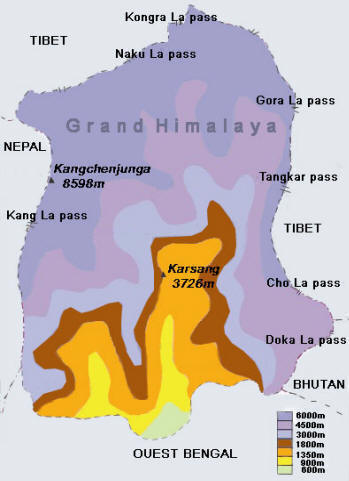
Flora and fauna
Of all the colours, of all the sizes, the orchises are the ornament of Sikkim. One finds some up to 3 000 meters of altitude. At the sides of these aristocrats of the vegetable kingdom, one can see four thousand species different of flowers, rhododendrons, magniolias, but also of the strange plants as Arisaema griffithii which resembles a cobra. The richness of fauna is not in remainder: musky pandas, deer, black leopards, bears, moufflons… and more than 500 species of birds.
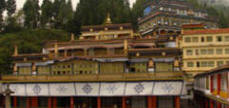
Monastery
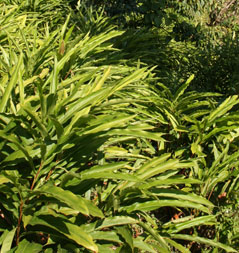 cardamone
Orchis
It is the national flower of Sikkim which has some, more than 600 varieties. The majority flower in September, but in April-May you will be able to attend Gangtok, with an exposure of this flower. Has 14 km of Gangtok, Saramsa Orchidarium, has 450 species of orchises.
Language
The traditional languages of Sikkim are a dialect of the Tibetan, the vbras-ljongs-skad (often written drejonke), the lepcha and the limbou, three languages tibéto-Burmeses
|
||||||||||||
|
|
|
|
|
|||||||||
